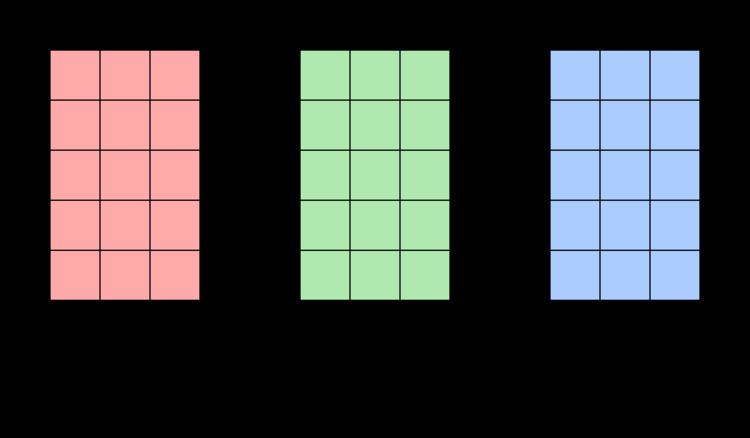 | ||
In mathematics, the Hadamard product (also known as the Schur product or the entrywise product) is a binary operation that takes two matrices of the same dimensions, and produces another matrix where each element ij is the product of elements ij of the original two matrices. It should not be confused with the more common matrix product. It is attributed to, and named after, either French mathematician Jacques Hadamard, or German mathematician Issai Schur.
Contents
- Definition
- Example
- Properties
- Schur product theorem
- In programming languages
- Applications
- Analogous operations
- References
The Hadamard product is associative and distributive, and unlike the matrix product it is also commutative.
Definition
For two matrices,
For matrices of different dimensions (
Example
For example, the Hadamard product for a 3×3 matrix A with a 3×3 matrix B is:
Properties
Schur product theorem
The Hadamard product of two positive-semidefinite matrices is positive-semidefinite. This is known as the Schur product theorem, after German mathematician Issai Schur. For positive-semidefinite matrices A and B, it is also known that
In programming languages
Hadamard multiplication is built into certain programming languages under various names. In MATLAB, GNU Octave and GAUSS, it is known as array multiplication, with the symbol .*. In Fortran, R, J and Wolfram Language (Mathematica), it is done through simple multiplication operator *, whereas the matrix product is done through the function matmul, %*%, +/ .* and the . operators, respectively. In Python with the numpy numerical library or the sympy symbolic library, multiplication of array objects as a1*a2 produces the Hadamard product, but with otherwise matrix objects m1*m2 will produce a matrix product. The Eigen C++ library provides a cwiseProduct member function for the Matrix class (a.cwiseProduct(b)), while the Armadillo library use the operator % to make compact expressions (a % b; a * b is a matrix product).
Applications
The Hadamard product appears in lossy compression algorithms such as JPEG. The decoding step involves an entry-for-entry product, i.e., Hadamard product.
Analogous operations
Other Hadamard operations are also seen in the mathematical literature, namely the Hadamard root and Hadamard power (which are in effect the same thing because of fractional indices), defined for a matrix such that: For
and for
The Hadamard inverse reads:
A Hadamard division is defined as:
